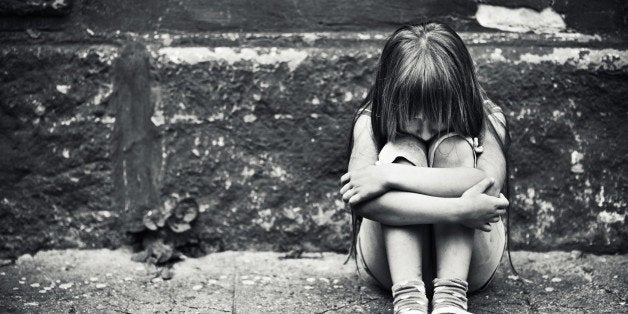
The philosophy of Child Protective Services is to protect and improve the safety of children. According to the Adoption and Foster Care Analysis and Reporting system, there are estimated 415,129 children in foster care in the United States, as of July 2015.
Children come into the system when they are abandoned, neglected, rejected, abused and orphaned.
Today, when a child is taken by protective services, they are placed in any random persons home, as long as the person obtains a license to become a foster parent, is older than 18, and passes a criminal background check.
According to LA Times writer Garrett Theolf, who obtained data from the state's electronic Child Welfare Services/Case Management System, which contains abuse complaints entered by county case workers, "those living in private agencies' homes are one third or 33 percent more likely to endure physical, emotional or sexual abuse." The system is overcrowded, siblings are separated and there is a desperate need of places to put these children, which is why over 5,000 waivers have been granted to criminals so that they could become foster parents.
Kiana Barker, is an example of a criminal who was able to obtain a license to become a foster parent and ended up killing a two-year-old by hitting her on the head with a hammer.
That might also explain how Richard Cassada, a registered sex offender, was able to become a foster parent so he could continuously abuse a child placed in his care.
Some people become foster parents because there is money involved. They are given at least $700 per child, and if a child has disabilities or medical needs, they are given an average of $1500 per month per child.
This might explain how Debra and Thomas Schmitz ended up with 18 disabled children, who they kept locked in cages and forced to dig their own graves, reminding them no one cares about them.
I spoke with Community Care Licensing to understand how the system could be putting our children in the hands of criminals, and their response to me was "often it's not the person who gets licensed who is a criminal, but regularly they'll find that it's the relatives, or people who come and go or live in the back house who are abuse the children."
County auditors found some of Los Angeles' biggest foster care agencies, Homes of Hope Teens Happy Homes in Los Angeles, and Child Net Youth and Family Services spending tax payer dollars on cigarettes, beer, fancy clothing, perfume and compensation packages for some of their employees worth $522,000 in 2010. Meanwhile, these foster homes lacked hot water, had no food in the refrigerator and cabinets. One had a bathroom with a crumbling tub and a sink with no faucet handles. (Read more about this here).
Another major concern is that often the case workers are over-worked and simply have too many children on their case load. In some cases, the paperwork they are required to do is so extensive that it trumps the actual visits and often leads them to use template responses because the paperwork is what keeps the agency funded and jobs intact.
Children were found starved and emaciated, covered in lice, with rotting teeth, while the paperwork read: "Raymond and Vanessa Jackson were doing an excellent job, providing a nurturing, stable environment."
Another outrageous report filled out by a child welfare specialist, Vera DuBose, explained that 3 children were "doing fine and have adjusted well to placement," when in reality, they had been dead for 3 months.
Sex traffickers target youth in foster care because of their increased vulnerability. According to John Ryan, the CEO of the National Center for Missing and Exploited Children, 60% of runaways who are victims of sex trafficking had been in the custody of social services or in foster care and 56% of LGBTQ youth in the system end up homeless because they felt safer on the streets than in their placements or group homes.
The literature does not support the belief that private foster care is superior to the government run system it replaced. There is an increased risk of re-abuse in privatized foster care systems. (Steen, J. , & Smith, S., 2012). The research regarding safety demonstrates a clear decrease following the shift to privatization and in Florida the re-abuse rate among private agencies are higher than they were before statewide expansion of the privatization effort (Florida Office of Program Policy Analysis & Government Accountability, 2006).
I just showed you a few examples here of the horror stories of our current child welfare system. There are countless. And unfortunately so many foster kids either accept the abuse as "normal" or they don't speak up because they are scared of the repercussions.
I know there are warm, and loving foster parents out there who open their hearts and homes and families to these children, but the fact that there are so many cases of murder, abuse, and neglect, is inexcusable and should be of great concern to anyone who cares about children.
I don't know what the answer is, but if it were G-d forbid my child who needed to be placed in the system, even for a night, I would wish there was a safe place for her to go. And I'm not necessarily suggesting that we revert back to the way things were, with the government run homes that were replaced by the current private system because although there were less cases of abuse, they also had systemic problems. It was like jail for kids. The staff were cold, cruel, abusive, horrible. Look up stories of MacLaren Hall if you want to read more about this.
Maybe I am a dreamer, but I just cannot believe that there is not a better system for these children. Where is the social justice? What about basic human rights?!
In November of 1912, the Jewish community opened an orphanage in Los Angeles that felt like home. Instead of crowding many children into an "institutionalized" setting, there were several small cottages where the children lived. Siblings were kept together, and children did their own cooking and cleaning under the supervision of a house mother. Fresh milk was available from the orphanage's own cows, and eggs from its flock of chickens. Children attended local schools.
Why don't we have places like this now!? There are beautiful, wonderful homeless shelters for adults, and gorgeous facilities for people with special needs, and breathtaking rehab centers for people struggling with substance abuse. But what about the children?
Is it too much to ask for a safe clean place, with healthy food, warm water and caring people working there?
The money is there. Kind hearts exist. Currently, in California alone, tax payers pay over 400 million dollars a year , billions are spent nationally, to this foster care industry that's clearly not doing the loving and professional job that it is meant to do. There must be a better way.
